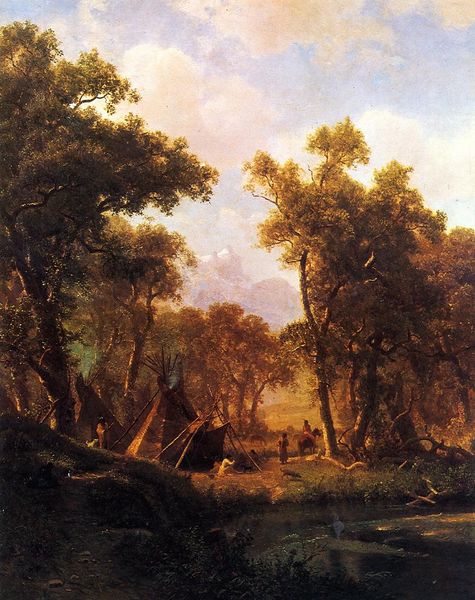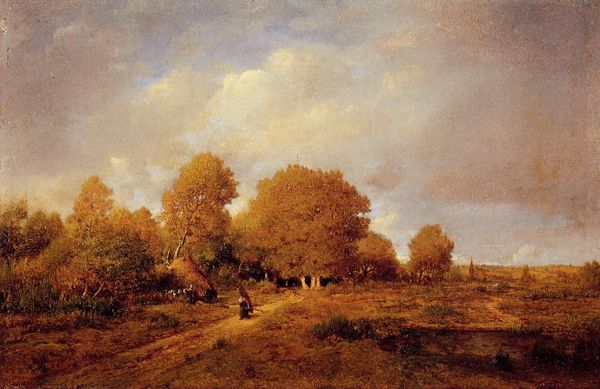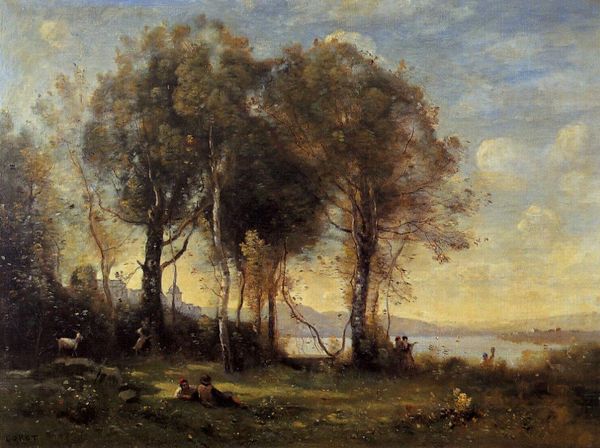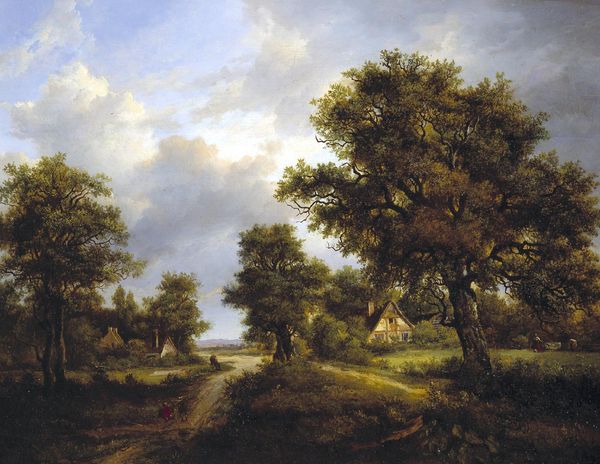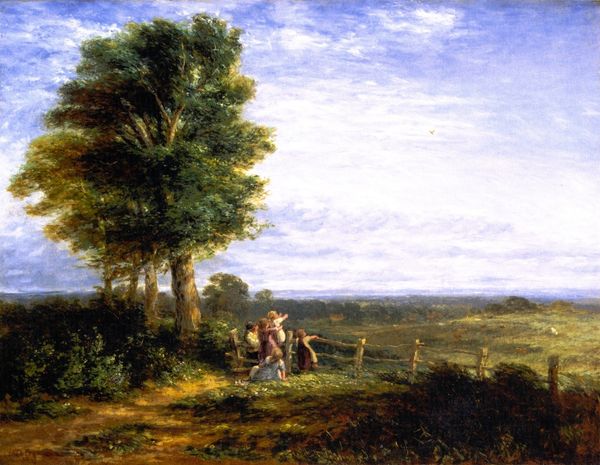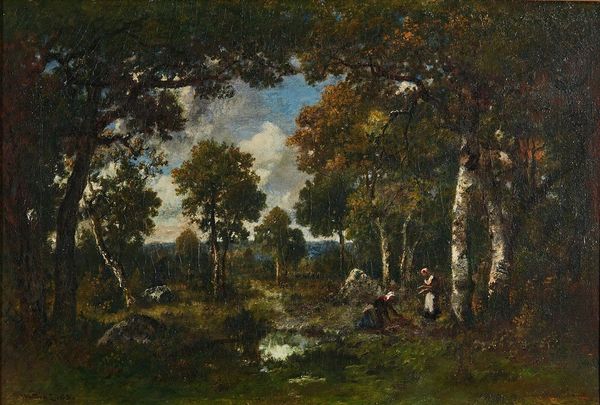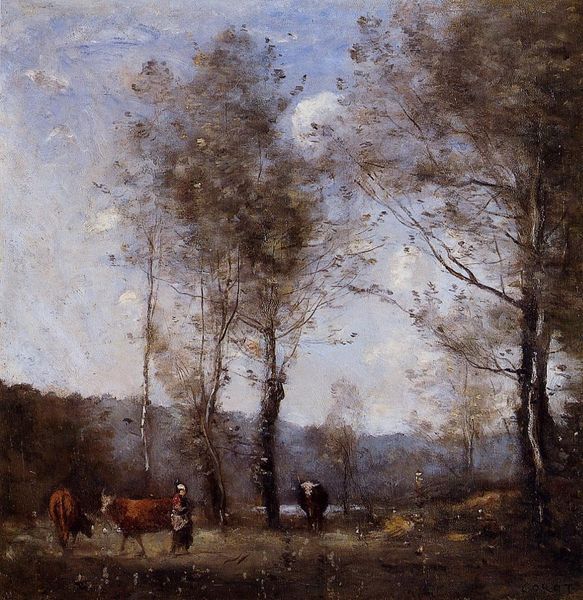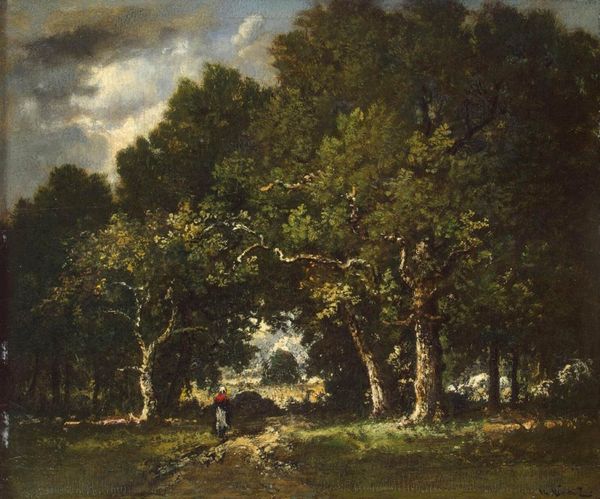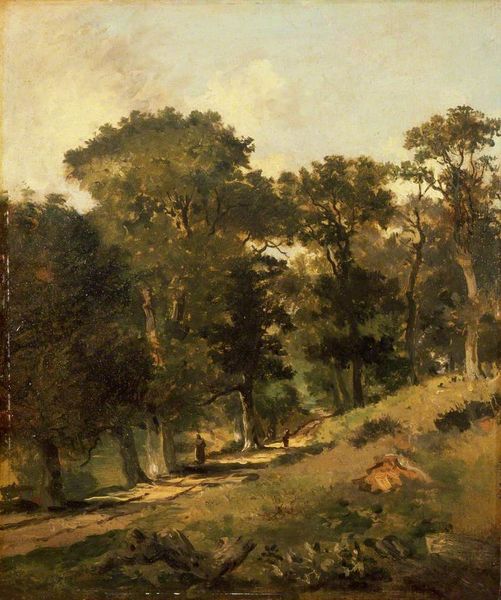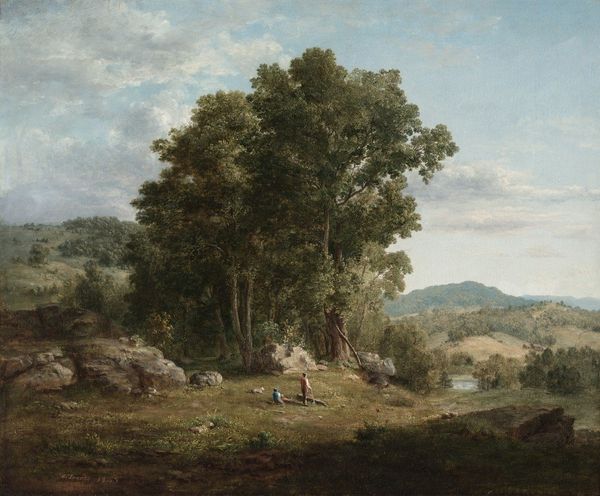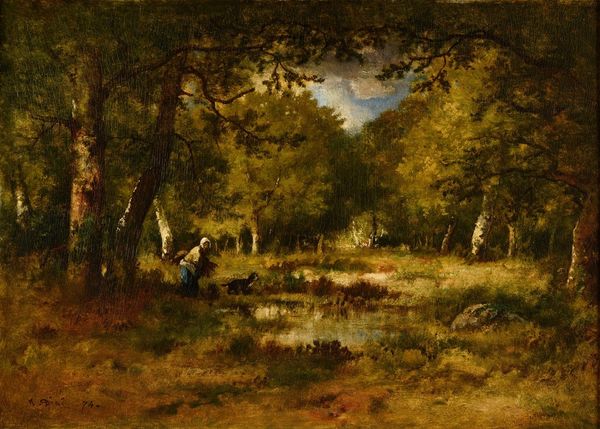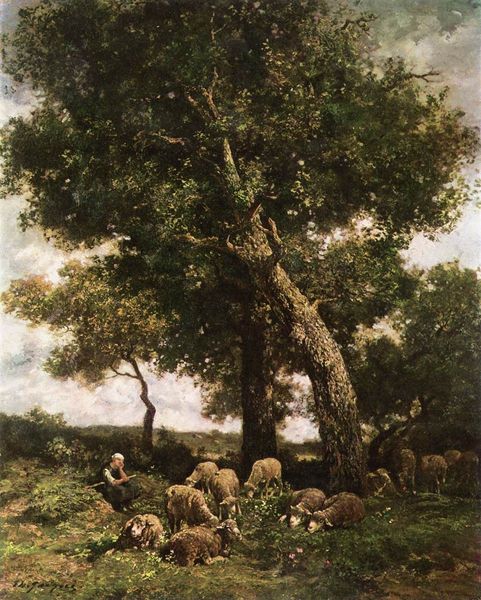
oil-paint
#
oil-paint
#
war
#
landscape
#
soldier
#
hudson-river-school
#
men
#
realism
Dimensions: 39.37 x 47.31 cm
Copyright: Public domain
Editor: This is Albert Bierstadt's "Guerrilla Warfare. Picket Duty in Virginia," painted in 1862 using oil. The contrast between the idyllic landscape and the grim reality of the soldiers creates such an unsettling feeling. What do you see in this piece? Curator: I see the clash of ideals and the fragility of civilization mirrored in the composition itself. The sheltering tree, usually a symbol of nature’s bounty and peace, is here a shield for soldiers engaged in a brutal conflict. Editor: That’s a really interesting point, about the tree’s symbolism. I hadn’t thought about it like that. Curator: Consider how landscape painting often carried messages of national identity and divine providence. Bierstadt complicates that by placing violence squarely within this seemingly blessed landscape. The men themselves are huddled, obscured – not heroic figures, but cogs in a war machine. Do you notice anything about their uniforms? Editor: They're very dark, almost blending into the shadows of the tree. Was that typical for guerilla fighters at that time? Curator: The dark color obscures specific affiliation, almost suggesting the universality of conflict, but beyond this artistic element lies its grounding in war tactics of that time. It poses a deeper question about who benefits from and remembers conflict, given its toll. It seems Bierstadt knew well what psychological scar such work inflicts over time. Editor: It’s fascinating how the symbolism transforms a seemingly simple landscape into such a layered commentary. I didn't think of the long-term effects before. Curator: Exactly. The emotional weight is carried forward through the imagery. It reminds us of cultural memory and the continuation of shared traumas through visual representation. Editor: I see that so clearly now. Thanks, it’s a lot to consider!
Comments
No comments
Be the first to comment and join the conversation on the ultimate creative platform.
